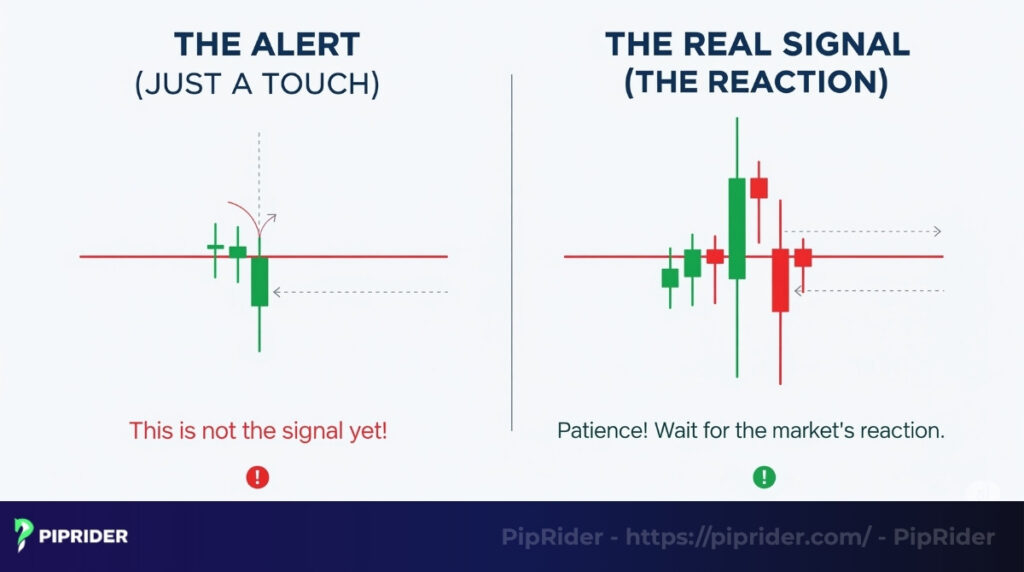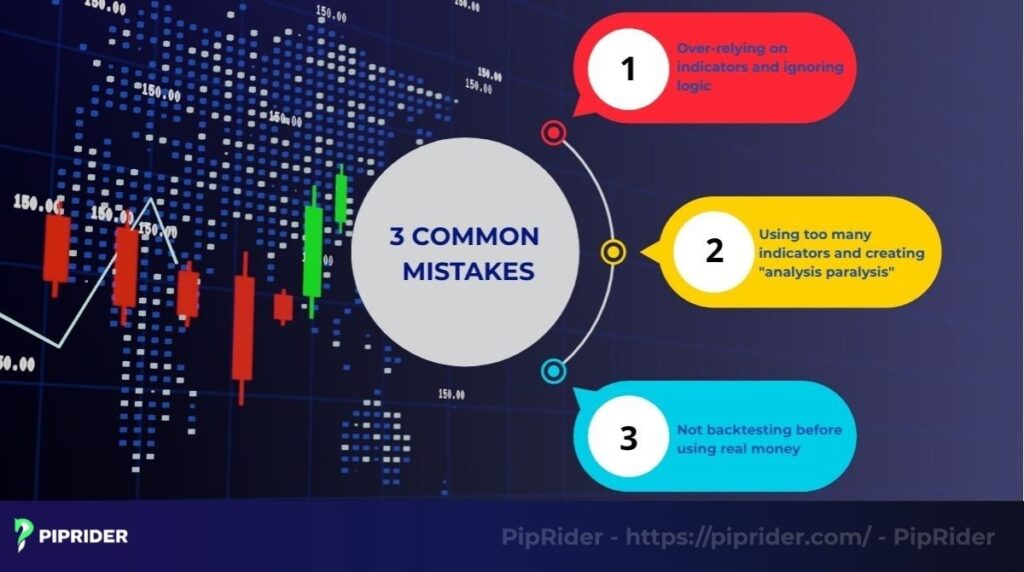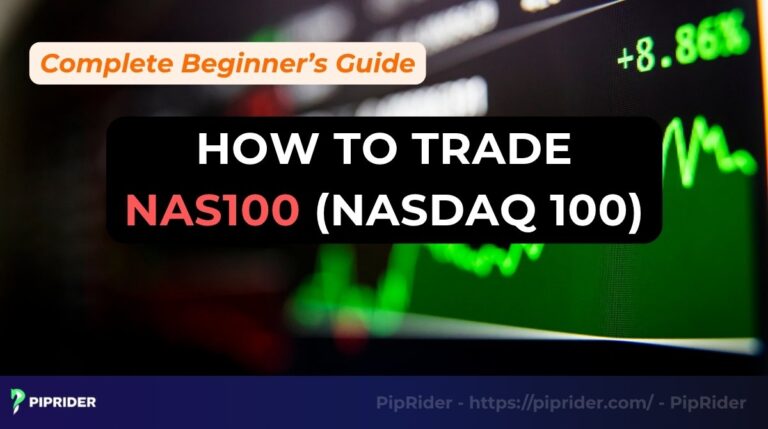Navigating volatile markets requires more than simple trendlines. It demands the accurate identification of key price levels that dictate reversals and breakouts.
Forex Level Indicators are the essential tools designed to automate this process. They pinpoint critical zones objectively and eliminate the slow, subjective guesswork of manual drawing.
This comprehensive guide shows you which indicators are genuinely effective. Learn how to combine them with price action and avoid the critical mistakes that trip up most traders, giving you a professional edge in trend line analysis.
Key Takeaways
- Key levels are the foundation of market structure where significant price reactions occur.
- Forex key level indicators automatically identify these zones, saving time and reducing subjective analysis.
- Powerful trading strategies combine indicator signals with price behavior for a high-probability breakout signal.
- Never rely on a single indicator; each has strengths and is best used as part of a system.
- Avoid using too many indicators at once to prevent “analysis paralysis” and conflicting signals.
1. What are Forex levels? And why they are vital for traders
In trading, forex levels are specific price areas that act like magnetic zones, causing the market to react. The most basic forms are support (a price floor that props up the price) and resistance (a price ceiling that pushes it down).

A more advanced view is to see Forex levels not as thin lines, but as broader supply zones and demand zones. A supply zone is an area full of sellers, while a demand zone is packed with buyers.
For a trader, identifying these key price levels is a vital skill. Forex levels provide the context traders need to make sense of a market’s price movements, allowing them to plan the entries, place strategic stop-losses, and set logical profit targets.
To truly grasp their importance, compare analyzing a chart with and without levels. Without them, the chart is chaotic noise, a series of random up and down ticks.
From a price action (PA) perspective, not all levels are created equal. The most reliable levels share these signs:
- Sharp rejections: The price moves away from the level with speed and force, signaling a strong imbalance.
- Multiple touches: The level has been tested repeatedly in the past and has held firm, proving its significance over time.
- A role reversal: An old support level that, once broken, becomes a new resistance level (or vice versa). This “flip” is a powerful confirmation signal.
2. What are forex levels indicators and how do they work?
A forex level indicator is essentially an automated assistant for charts. It’s a tool designed to do the heavy lifting of finding and drawing key price zones, freeing traders from the slow, manual process.
At their core, these indicators operate by applying mathematical formulas to historical price information. They analyze historical highs, lows, and closing prices to calculate and project potential support and resistance levels. It’s all about using history to anticipate future reaction points.
But let’s be real about the pros and cons from a trader’s perspective.
- The advantages: The most significant benefit is the amount of time and mental energy traders get back. They provide an objective, unemotional view of the market conditions, which is incredibly valuable when your own biases can cloud the judgment.
- The disadvantages: Too dependent on them. If traders blindly follow an indicator, they stop learning to read the market’s language through price behavior. Always remember, tools are not a magic bullet. They are lagging by nature and can’t replace own critical thinking.
Read more:
6 Essential Momentum Indicators Forex Traders Should Know
On Balance Volume OBV Indicator: A-Z Guide For Beginners
A trader’s guide to the Price Rate of Change (ROC) indicator
3. Common forex levels types
The world of indicators can feel overwhelming, but they generally fall into a few key categories. Some draw the levels, while others help traders confirm what happens when the price gets there. Understanding the right tool for the job is what separates confused traders from confident ones.

3.1. Bollinger band – Measuring volatility and price bounces
Think of Bollinger Bands as dynamic levels that expand and contract based on market volatility. The outer bands are the key here. When the price touches the upper or lower band, it doesn’t automatically mean reverse; it means the price is relatively high or low. They are most useful in ranging markets to spot potential bounces off these “volatility envelopes.”
3.2. Fibonacci – Finding natural reversal zones
The Fibonacci tool is a classic for a reason. While traders have to draw it manually, it’s a core part of level analysis. It projects potential support and resistance levels based on the “golden ratio.” Following a powerful price swing, the 38.2%, 50%, and 61.8% retracement levels become critical areas of focus for traders. A pause or stall in price at one of these hidden levels frequently signals a high-probability entry opportunity.
3.3. Moving averages (SMA/EMA) – Dynamic support and resistance
Unlike static support lines, moving averages (like the 50 or 200 EMA) create flowing, dynamic support and resistance. In a clear uptrend, traders’ll often see the price pull back to a key moving average and bounce off it as if it were a trampoline. They provide a clean, visual guide to the ongoing price trends and potential entry points within it.
3.4. Ichimoku cloud – The all-in-one levels system
At first glance, the Ichimoku Cloud (or Kumo) looks incredibly complex. But for level trading, traders can focus on one thing: the cloud itself. This shaded area acts as a thick, dynamic zone of future support and resistance. When the price is inside the cloud, the market is seen as choppy. When it’s above or below, the cloud becomes a formidable barrier for price to breakout back through.
3.5. Moving Average Convergence Divergence – Confirming momentum shifts near levels
The MACD tracks momentum. Let’s say the price hits a strong resistance level trader’ve marked. If, at the same time, the indicator shows the divergence, it’s a powerful clue that the level is likely to hold and the price may reverse.
3.6. RSI – Spotting overbought/oversold conditions at levels
The Relative Strength Index (RSI) is our go-to for gauging exhaustion. If the price drops into a key support zone while the RSI is below 30 (“oversold”), it’s a strong signal that selling pressure is drying up, and a bounce is likely. It’s about finding confluence between the where (the level) and the what.
3.7. Stochastic oscillator – Identifying reversal signals at levels
The Stochastic oscillator is similar to the RSI but is often more sensitive to immediate price changes (Investopedia, n.d.). It’s particularly effective in range-bound markets. When the price hits the top of a resistance channel and the Stochastic crosses down from the overbought (>80) area, it provides a solid confirmation for a potential short entry.
Here’s a simple breakdown to help traders choose the right tool for the right job.
| Indicator | Primary function | Type | Best for | Piprider’s tips |
| Bollinger Bands | Shows volatility | Dynamic | Bounces in ranging markets | “Walking the band” signals trend strength. |
| Fibonacci | Projects reversal levels | Static | Pullback entries in a trend | The 61.8% level is often the strongest. |
| Moving Averages | Defines the trend | Dynamic | Trend-following & dynamic S/R | Reactions at the 200 EMA are significant. |
| Ichimoku Cloud | All-in-one system | Dynamic | Future support/resistance zones | Thicker clouds mean stronger levels. |
| MACD | Shows strength | Confirmation | Confirming levels with divergence | Crossovers at a key level are powerful. |
| RSI | Shows overbought/oversold | Confirmation | Confirming exhaustion at levels | Never trade RSI alone; wait for price. |
| Stochastic | Shows turning strength | Confirmation | Early reversal signals in ranges | More sensitive than RSI; good for quick scalps. |
4. How to use level indicators effectively?
An indicator on its own is just a suggestion. A real, high-probability breakout signal only happens when the indicator’s level aligns with what the price itself is telling.
4.1. How to actually read an indicator’s signal
Reading an indicator’s signal requires distinguishing the alert from the execution trigger. The signal is not when the price simply touches a moving average or a pivot point; that is merely an alert of a potential setup.

The true signal lies in the subsequent price action. A trader must assess the market’s reaction: Is the level being respected, causing a decisive rejection of the price? Or does the price slice right through without hesitation?
Patience is critical here. Entering the market the moment a level is touched often leads to premature entries and potential losses. The systematic approach requires waiting for the market to confirm its intended direction before committing capital.
4.2. Combining signals with price action (PA)
The trader should use price movement to confirm the indicator’s identified level.
- Confirmation Candles: When price hits a key support or resistance level, the analyst must wait for a Pin Bar or a bullish engulfing candle. These chart patterns confirm that institutional buyers or sellers have stepped in and are rejecting the extreme prices. This rejection should also be corroborated by a spike in trading volume.
- Analyze Market Structure: Look for a clear Break of Structure (BoS) or trend failure. For instance, if a downtrend is making lower lows and lower highs, and then fails to make a new Lower Low (LL) at the support level, that provides a strong clue that the trend might be reversing.
4.3. How to read confluence zones
Confluence is when multiple technical confirmation signals all point to the same conclusion, creating a high-probability setup. It’s like having several expert opinions all agreeing.
- What to look for: A confluence zone could be a place on the chart where a horizontal resistance level lines up perfectly with the 200 EMA and a 61.8% Fibonacci retracement level.
- Why it works: When so many different factors align, traders know that many different types of traders are all watching the same spot. This increases the odds of a strong reaction. I always feel much more confident taking a trade in a clear confluence zone.
4.4. Example strategy: Entry at a support zone + candle confirmation
Here is a simple, powerful strategy traders can practice:
- Identify the level: Use an indicator (like Pivot Points or a key Moving Average) to find a strong support level.
- Wait for the approach: Watch patiently as the price drops down to this level. Do not do anything yet.
- Get price action confirmation: Wait for the current candle to close. Are you seeing a strong bullish signal, like a pin bar with a long lower wick or a bullish engulfing candle?
- Enter the trade: If you get that confirmation candle, you can now enter a buy order, placing your stop-loss just below the low of the candle. This is a core part of effective risk management.
4.5. Important tip: Never rely 100% on an indicator
An indicator assists your decision-making, not to make the decision for you. Blindly following any indicator without understanding the context of the market and without waiting for movement of prices to confirm your idea is a recipe for disaster. Be a thinker, not a follower.
5. Common mistakes when using forex level
Tools are only as good as the person using them, and indicators are no exception. But if traders abuse indicators without understanding their core logic, they can become ‘chart blind’ and lose the analytical edge.

Learning to avoid them and other pitfalls, such as false breakouts, will save a lot of frustration and, frankly, a lot of money. Let’s walk through the most common traps.
5.1. Over-relying on indicator and ignoring logic
This mistake involves the trader ceasing to analyze or think critically. Instead of asking why a setup makes sense or checking the broader market context, the trader relies solely on a “buy” or “sell” arrow.
The reality is that indicators cannot interpret news or fundamental data; they are merely one piece of the puzzle. Failing to verify a technical signal against the macro environment exposes the position to unnecessary risk.
5.2. Using too many indicators and creating “analysis paralysis”
Loading a chart with redundant tools, multiple moving averages, several oscillators, and pivot point indicators, is common. The result is a screen cluttered with conflicting data and signals. When indicators send contradictory messages (e.g., MACD says sell, Stochastic says buy), the trader often freezes. This state of indecision, known as “analysis paralysis,” results directly from using too much conflicting data.
5.3. Not backtesting before using real money
Entering the market with real money based on an untested strategy found on a public forum is an act of gambling, not trading.
The danger lies in having no statistical data on the strategy’s historical performance. Without verifying whether the indicator combination works in trending versus ranging environments, a trader exposes their account to unnecessary and undefined risk.
5.4. How to fix these mistakes: Piprider’s advice
Avoiding these common pitfalls requires two core, disciplined principles:
- Simplify the Charts: The most important step is choosing a maximum of two non-correlated indicators (e.g., one trend filter and one oscillator) for confirmation. A clean chart supports clear, decisive thinking.
- Understand the Logic: Traders must understand the underlying logic of their tools. When the trader understands why a level (like the 200 EMA) is reliable, they can use it intelligently and confidently instead of blindly following a line.
6. How to install and download recommended indicators
Let’s get these tools onto the charts. It’s easier than you might think. I’ll walk you through the process for the two most popular platforms, TradingView and MetaTrader 4 (MT4).
6.1. For TradingView users
On TradingView, adding an indicator is incredibly straightforward.
- Step 1: Find the “Indicators” button. You can find it located in the main toolbar at the top of the screen.
- Step 2: Search for an indicator. A window will pop up. Search for built-in classics like “Moving Average Exponential” or “RSI.” For custom tools made by the community, browse the “Community Scripts” tab.
- Step 3: Click to add. Just select the desired indicator from the list, and it will be applied to the chart immediately.
Our tip: Once you have a setup you like (e.g., a 50 EMA and an RSI), save it as a “Chart Layout.” This lets you load the favorite toolset onto any chart with a single click.
6.2. For MetaTrader 4 (MT4) users
MT4 is a bit more ‘old school’, but it’s a workhorse. Installing a custom indicator usually involves adding a file (with a .ex4 or .mq4 extension) to the right folder.
- Step 1: Download the indicator file. Download the indicator file from a reputable source onto the computer.
- Step 2: Open data folder. In MT4, go to the top menu and click File -> Open Data Folder.
- Step 3: Place the file. A new window will open. Navigate to the MQL4 folder, and then into the Indicator folder.
- Step 4: Drag and drop your downloaded .ex4 file into this folder.
- Step 5: Refresh or restart. Close and reopen MT4, or right-click on “Indicator” in the “Navigator” panel and hit “Refresh.” Your new indicator will now be in the list, ready to be dragged onto a chart.
Our tip: Be extremely careful where you download files from. Stick to well-known communities like the official MQL5 marketplace. Avoid any site selling a ‘guaranteed profit’ indicator for $99.
6.3. How to adjust basic indicator settings
Once an indicator is on your chart, you can almost always customize it.
- Move your cursor over the indicator’s name on the chart to reveal the settings icon (typically a small gear).
- The “Inputs” tab allows you to modify the indicator’s main parameters. For example, you can change a moving average’s Length from 50 to 200, or the RSI’s Length from the standard 14.
Our tip: Don’t change settings randomly. Understand why you are changing them. Only adjust parameters if you are testing a specific strategy that calls for it. The default settings are often the standard for a good reason.
7. FAQs – Common questions about forex level indicators
Here are some quick, straight-to-the-point answers to the questions I get asked most often.
8. Conclusion and a look at advanced strategies
Ultimately, forex level indicators are powerful tools, but they are no substitute for a trader’s critical thinking. Use them to guide your analysis, not to replace it. This is the key takeaway we hope you remember.
When you are ready to elevate your trading, the next skill to master is multi-timeframe analysis. This technique involves finding a major key level on a daily or weekly chart and then hunting for precise entries on a lower timeframe, creating powerful confluence zones. Mastering this will truly change how you see the market and manage your risk.
Be sure to follow Piprider to read more useful articles about other Forex indicators at Learn Forex section.








